
Feel free to add tags, names, dates or anything you are looking for
The Svetitskhoveli Cathedral in Mtskheta is Georgia’s most famous landmark. According to Georgian tradition, it stands on the burial site of the Christ's chiton. The first church was built here as early as 330 by the newly baptized King Mirian on the advice of St Nino, the Illuminatrix of Georgia. The name Svetitskhoveli means Life-Giving Pillar and derives from a wooden pillar standing in the church, which was believed to be miracle-working. In 480s King Vakhtang Gorgasal replaced the first wooden church with a new one, a large three-nave basilica built of stone. Between 1010 and 1029, a new Svetitskhoveli Cathedral was built on the initiative of Catholicos Melchisedec I, by the architect Arsukisdze. The new cathedral incorporated the remains of the longitudinal walls and piers of the basilica.
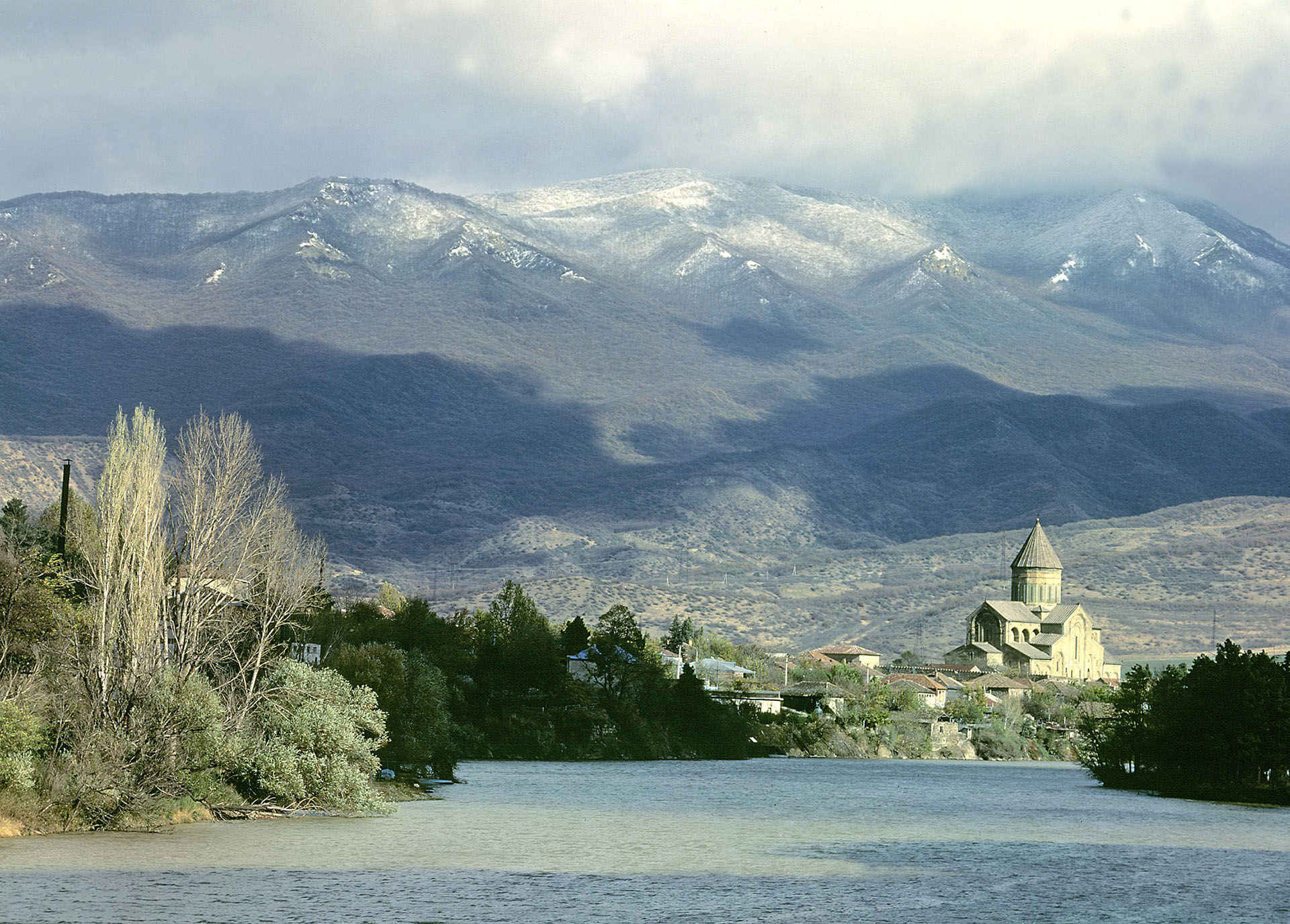
Svetitskhoveli Cathedral. Far view from the Kura River
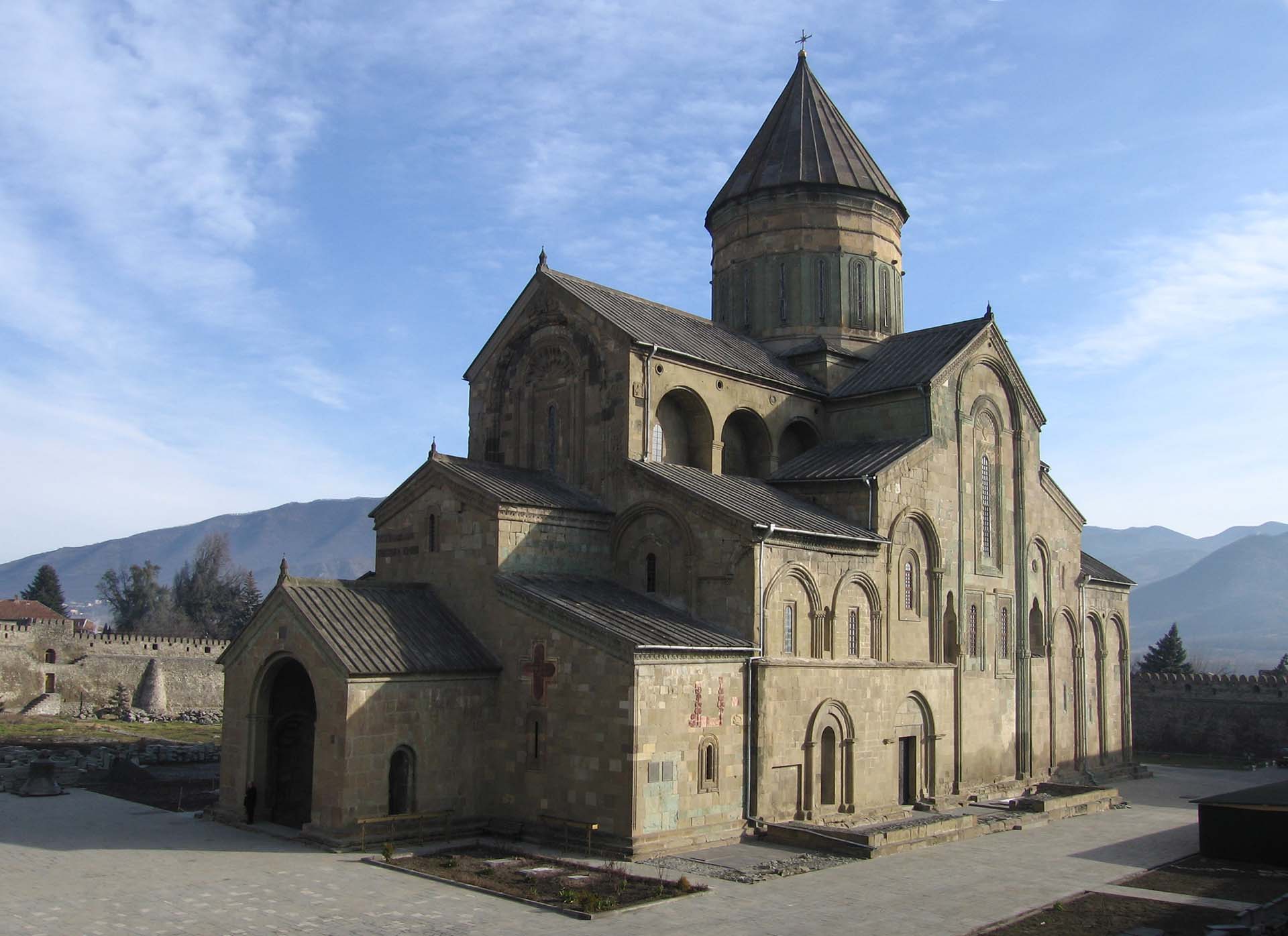
General view from the south-west
Svetitskhoveli is the largest Medieval church in Georgia. It has an elongated rectangular ground plan and the dome resting on four piers. The sanctuary is very deep, with seventeen arched sitting niches in the walls of the apse and chancel bay for the catholicos and the bishops. On both sides of the altar, there are apsed chapels, of St Nicholas to the north and of St Elias to the south. The latter has a well in the middle and an ascent to the upper storey rooms and numerous hiding places over the vaults.
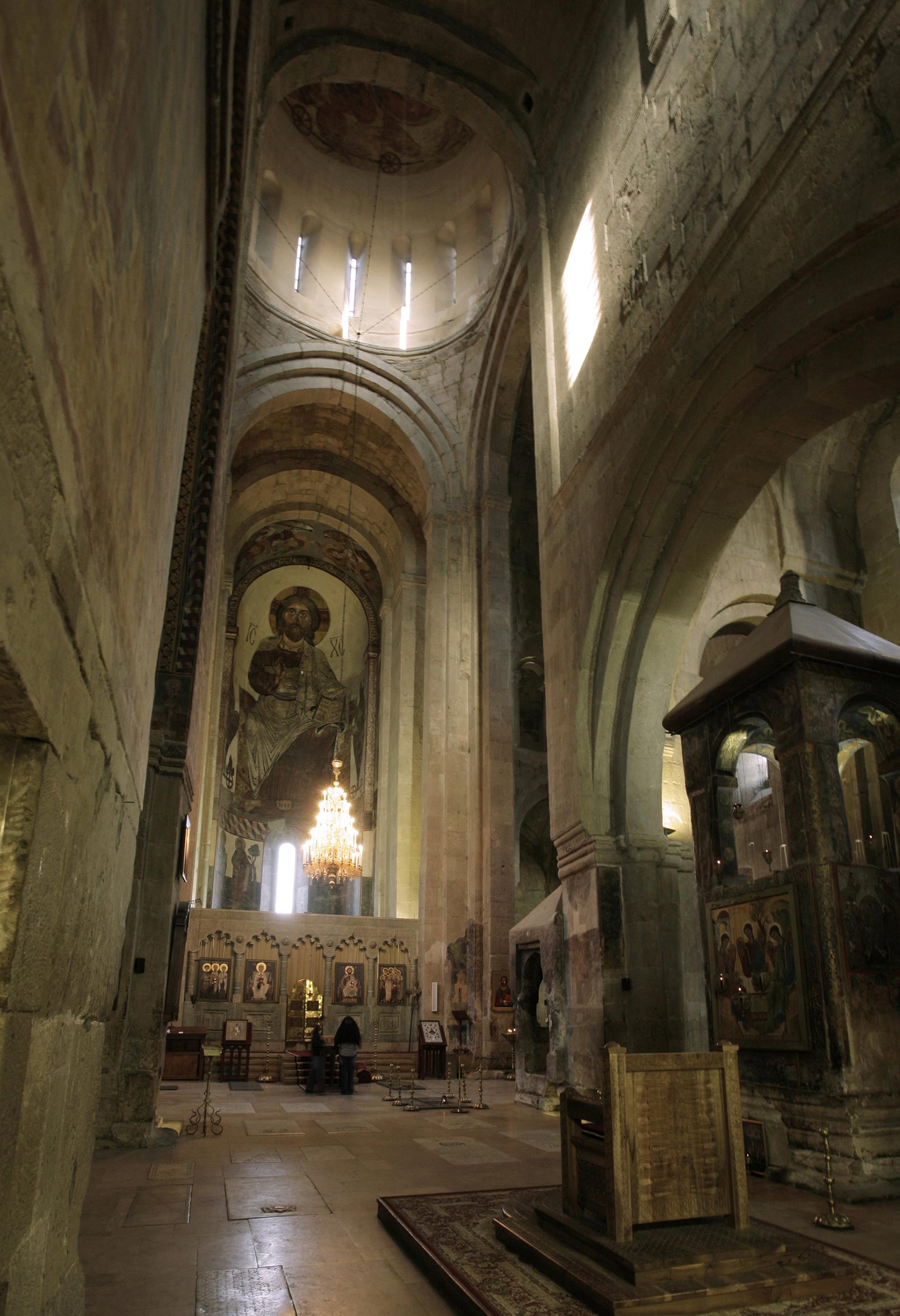
Interior looking east
Initially, the western part of the cathedral was divided into three naves by means of three pairs of arches of equal width. The U-shape upper gallery surrounded the nave from three sides. In 1400, when the army of Tamerlane destroyed the cathedral, the western part was evidently damaged worse than the rest of the building. King Alexander I restored it between 1413 and 1440. During the restoration two pairs of arches were made of differing width and the upper gallery was reduced to a room at the western end of the nave. The dome of Svetitskhoveli collapsed in 1656 and was restored the same year by King Rostom and Queen Mariam.
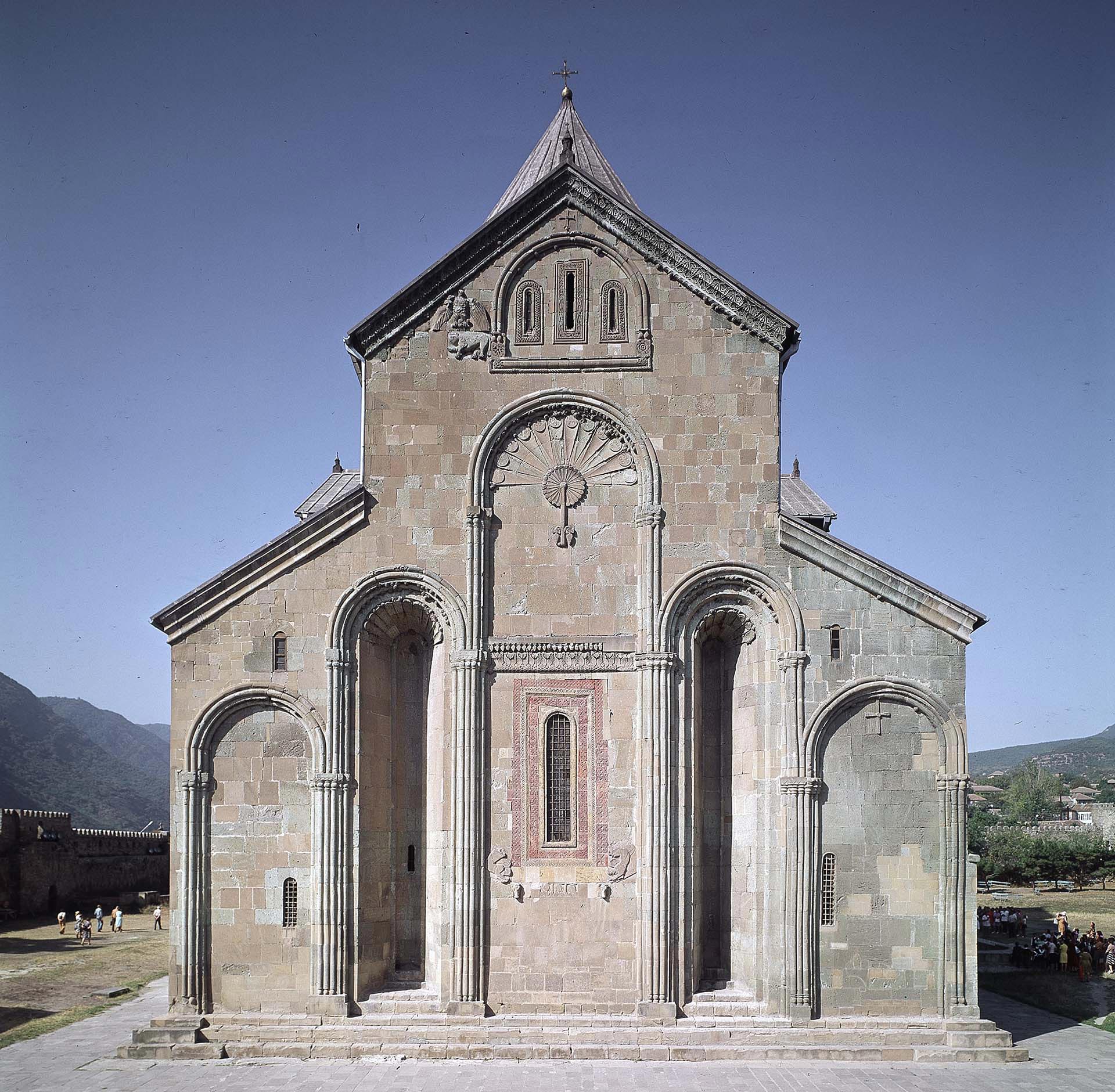
East Facade
The façades of the cathedral are faced with smoothly hewn sandstobe blocks and articulated with blind arches. They also bear the marks of significant restorations. The initial decoration is preserved on the eastern façade. The window of the sanctuary is adorned with an ornamental frame of dark red stone. The central space of the wall, above the main window, is occupied by a fan-like composition, consisting of twelve radiating segments.
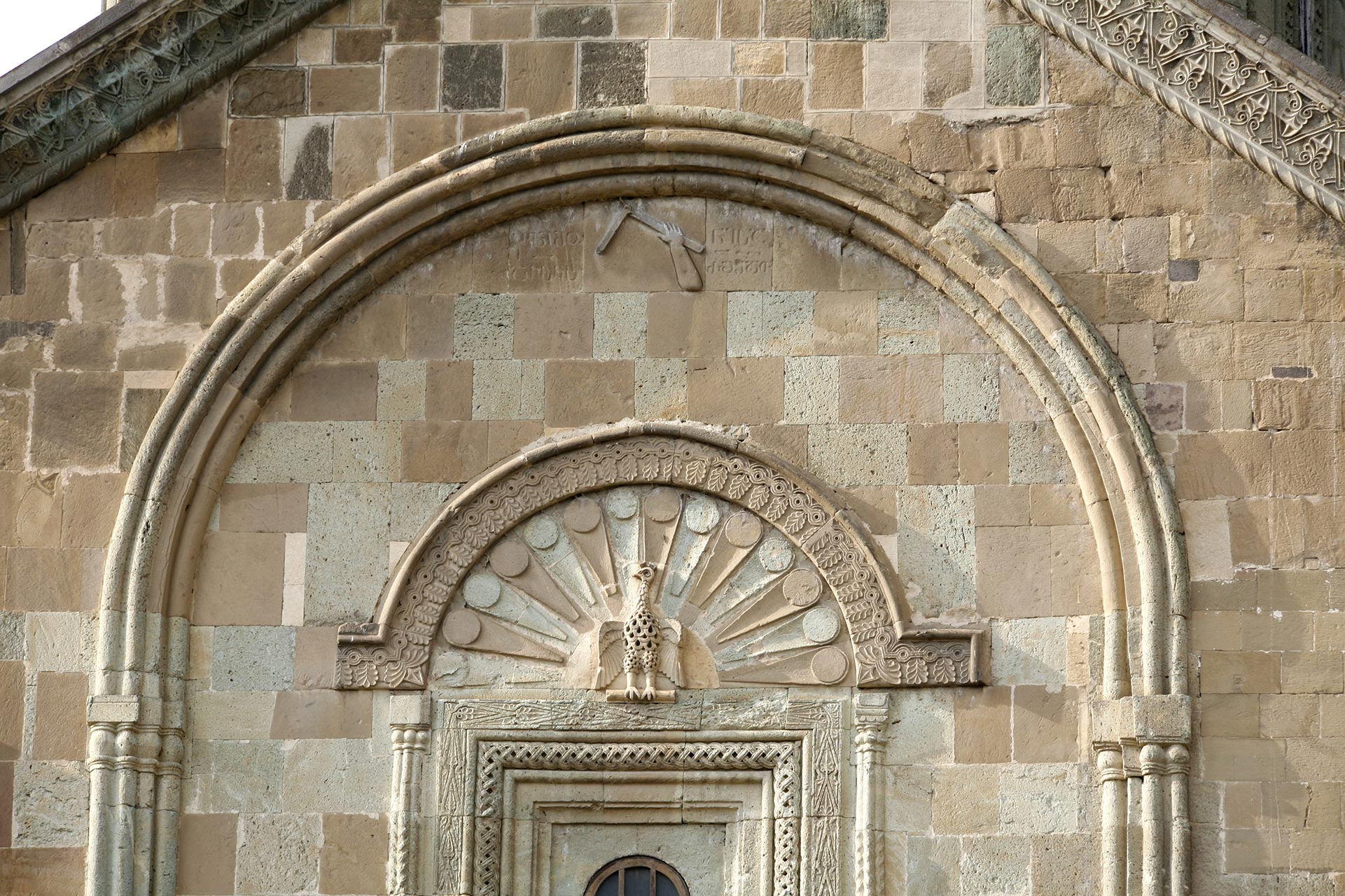
Upper part of north façade
The inscription on the disks at the ends of the segments mentions the donor of the cathedral, Catholicos Melchisedec and the architect Arsukisdze. The both are mentioned again in the memorial inscription of the northern façade, next to the symbolic depiction of the hand of the architect holding a square. Numerous sculptural images and foliage decoration can be seen on all facades.